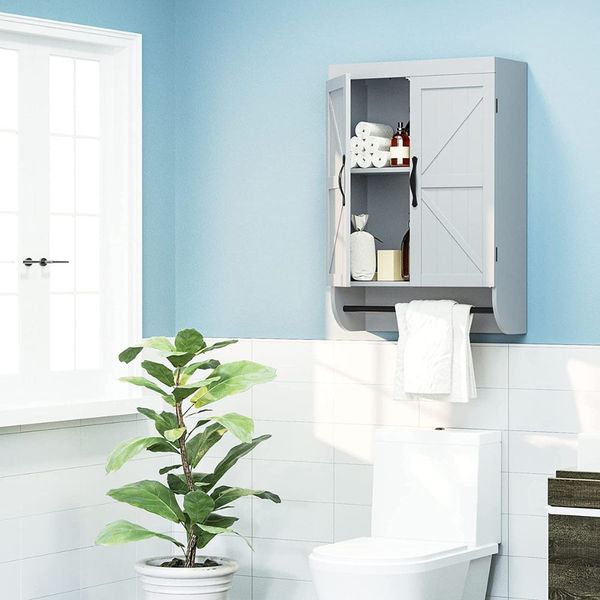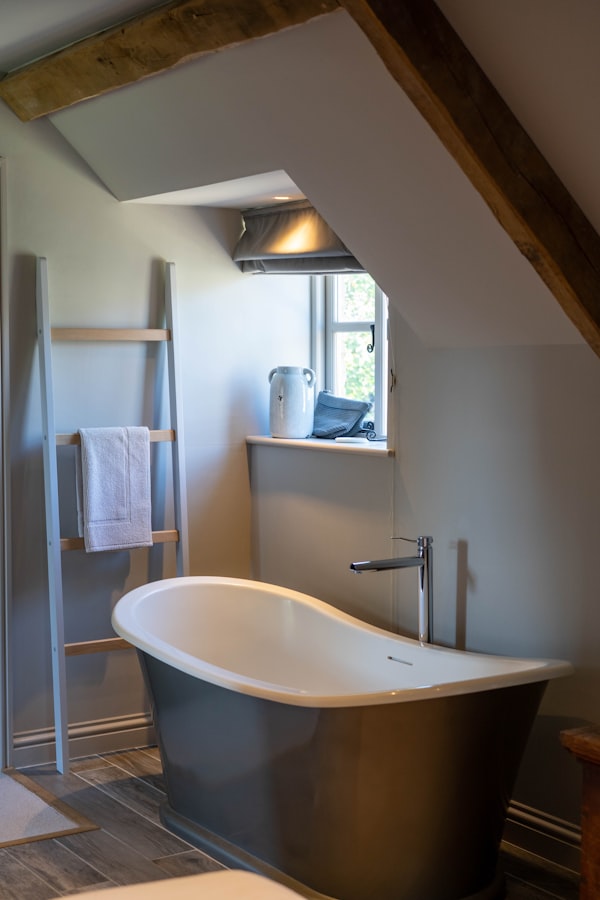Many homes have bathrooms that do not have outside access, which can make it difficult to ventilate. There are a few ways to vent a bathroom without outside access, and the method you choose will depend on the layout of your home. In this blog post, we will explore a few different methods for venting a bathroom with no outside access.
Method 1: Through the Roof
If your bathroom is located on an upper level of your home, you may be able to vent the bathroom through the roof. To do this, you will need to install a roof vent kit. This method is most effective if the bathroom is located near the center of the house so that the ductwork can run through the attic space. If your bathroom is located on an exterior wall, you may still be able to use this method, but you will need to add insulation to the ductwork to prevent heat loss.
Method 2: Through an Interior Wall
Another option for venting a bathroom with no outside access is through an interior wall. To do this, you will need to install an inline fan in the wall between the bathroom and an adjoining room. The inline fan will exhaust air from the bathroom and circulate fresh air into the room. This method is most effective if the adjoining room is larger than the bathroom and has good ventilation.
Method 3: Through a Floor Vent
If your bathroom is located on the first floor of your home, you may be able to vent the bathroom through a floor vent. To do this, you will need to install a floor vent kit. This method is most effective if the bathroom is located near an exterior wall so that the ductwork can run through the crawl space beneath the house. If your bathroom is located in the center of your home, you may still be able to use this method, but you will need to add insulation to the ductwork to prevent heat loss.
What is the point of a ductless bathroom fan?
There are many benefits to installing a ductless bathroom fan. For one, it is much more energy efficient than a traditional fan. It also does not require any ductwork, making it easier to install.
Additionally, a ductless fan will not add any unwanted noise to your bathroom. The main purpose of a ductless fan is to remove excess moisture from the air. This is important because humidity can cause mold and mildew to form, which can lead to serious health problems.
A ductless fan will also help to reduce odors in your bathroom by circulating fresh air. In summary, a ductless bathroom fan offers many benefits and should be seriously considered if you are looking for a new fan for your home.
Do bathroom walls need to breathe?
Bathroom walls are often exposed to high levels of moisture, making them susceptible to mold and mildew growth. In addition, the constant presence of water can cause the paint or wallpaper to peel and the wood to warp.
To prevent these problems, it is important to ensure that bathroom walls are able to breathe. That means allowing air to circulate freely behind the walls so that moisture can evaporate quickly.
This can be achieved by installing vents in the bathroom, or by drilling small holes in the walls. While some people believe that bathroom walls need to be airtight to prevent water damage, the opposite is actually true.
By ensuring that bathroom walls can breathe, you can help to prevent a variety of costly and unsightly problems.
Can I use a dehumidifier instead of a bathroom fan?
Many people believe that running a dehumidifier in their bathroom will do the same job as a bathroom fan, but this is not the case. Dehumidifiers work by removing moisture from the air, while bathroom fans help to ventilate the space and prevent moisture build-up.
While a dehumidifier can help to reduce the amount of moisture in the air, it will not do anything to remove odors or improve air quality. In addition, dehumidifiers can be quite noisy, making them less than ideal for use in a bathroom.
For these reasons, it is best to use a bathroom fan in conjunction with a dehumidifier, or to use a fan on its own. By taking these steps, you can help to keep your bathroom smelling fresh and free of mold and mildew.
Is it OK to vent bathroom into attic?
No, it is not typically ok to vent bathroom exhaust into an attic space. The main reason for this has to do with moisture. When you take a shower, the steam from the hot water creates a lot of moisture. That moisture can quickly build up in an enclosed space like an attic and lead to problems like mold and mildew.
Additionally, the heat from the bathroom exhaust can cause the temperature in the attic to rise, which can also lead to moisture issues. For these reasons, it’s generally best to vent bathroom exhaust directly to the outside.
Conclusion
Venting a bathroom with no outside access can be challenging, but it is possible. The best method for venting a bathroom without outside access will depend on the layout of your home. By following these instructions, you can ensure that your bathroom is properly ventilated regardless of its location in your home.
Please jump over to our Home Page for more helpful Articles.








